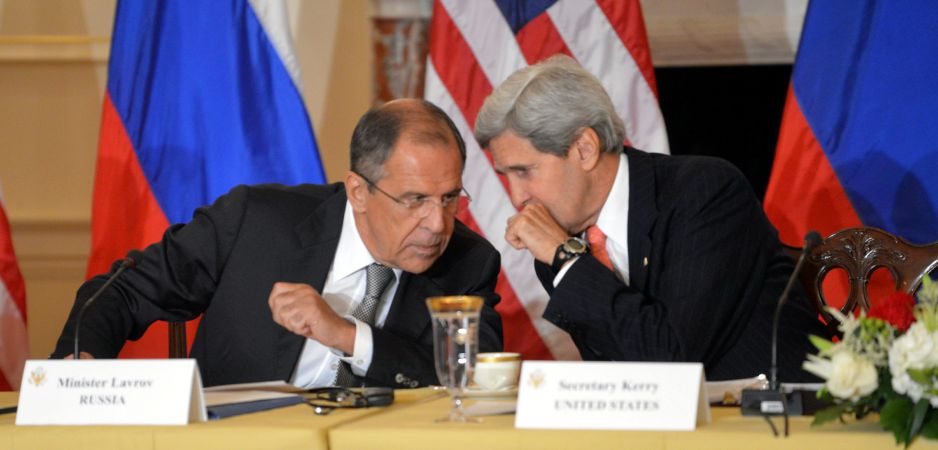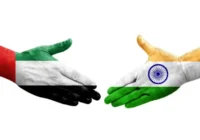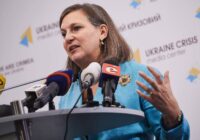After more than four years of violence, some observers see signs of an end to the diplomatic gridlock over the Syrian conflict.
The Syrian Civil War has claimed the lives of nearly 250,000 people, according to the Syrian Observatory for Human Rights. In the two months from June 9 alone, it recorded around 10,000 deaths. More than 71,000 of those killed since March 2011 have been civilians.
To date, diplomatic efforts to resolve the conflict or mediate a long-term truce have failed. Two United Nations (UN) special envoys—former UN Secretary-General Kofi Annan and seasoned Algerian diplomat Lakhdar Brahimi—resigned from their posts in frustration at the impasse.
However, since the Iran nuclear deal on July 14, several new developments have arisen, hand in hand with significant Syrian government battlefield losses, which some observers describe as the strongest sign of a renewed diplomatic effort to end the war. One such sign was Syrian Foreign Minister Walid al-Moallem’s first visit to a Gulf Arab country since the start of the war in 2011. On August 6, Moallem traveled to Oman, where he met his counterpart, Yusuf bin Alawi.
While Oman has steered away from direct involvement in the Syrian Civil War, other Gulf Arab states are staunch backers of the Syrian rebels and are strong opponents of Syrian President Bashar al-Assad, who they see as an extension of Iranian power in the Middle East. During the meeting in Muscat, the two foreign ministers agreed that it was time for “constructive efforts” to end the crisis.
Diplomats tracking the situation in Syria said that it was Assad’s allies, Russia and Iran, who were behind this latest push in the wake of the nuclear deal. In a similar vein, diplomats have spoken of a lighter mood since the deal was reached. One was quoted as saying in reference to Moallem’s trip: “To go to Tehran and then straight to Oman is significant in itself … It is an indication that there is something in the oven.”
Before the meeting in Oman, US Secretary of State John Kerry met with his counterparts from Saudi Arabia and Russia in Qatar, an unusual gathering considering Moscow’s strong alliance with the Syrian regime, while the US and Saudi Arabia support the rebellion. A senior US State Department official said the three foreign ministers “acknowledged the need for a political solution to the conflict and the important role to be played by opposition groups in reaching that solution.”
Russian Foreign Minister Sergei Lavrov, who met Kerry for a second time several days after the trilateral meeting in Qatar, has been aiming to bring about a rapprochement between Syria and regional states, including Saudi Arabia and Turkey, in order to forge an alliance against the Islamic State (IS). The Russian foreign ministry said the formation of a “wide anti-terrorist front” had been one the key themes of the trilateral talks.
In another development, the UN Security Council passed a resolution on August 7, which established the groundwork for an inquiry into who perpetrated chemical weapons attacks in Syria. The resolution saw an unusual cooperation between the US and Russia on Syria and had been in preparation by the two countries’ diplomats for months. Samantha Power, the US ambassador to the UN, called the unanimous Security Council vote a “modest” step toward ending the impunity of war criminals in Syria.
What is behind this diplomatic opening?
There has been a flurry of analysis about what led to the current rapprochement. While the Iran nuclear deal played an important role, observers see other issues as pivotal. As Anne Barnard reported for The New York Times, Russia and the US are making progress toward goals they have long said they shared: “A political solution to Syria’s multi-sided civil war and better strategies to fight the Islamic State.”
The persistent threat of the Islamic State is a unifying fear, shared by regional powers in opposite camps such as Saudi Arabia and Iran, as well as the US and Russia. Some analysts, Barnard writes, say the current opening shows the Obama administration has softened its stance on President Assad, whose departure was previously among its key demands, and shares Russia’s concern that IS could benefit from a further weakening of or full-scale collapse of the Syrian government.
The Pentagon’s training program to create a moderate Syrian rebel force that could push back against IS has, moreover, experienced several setbacks, as the number of trained Syrians falls far short of 100, while some members of the newly trained force have reportedly been kidnapped by Syria’s al-Qaeda affiliate, Jabhat al-Nusra.
Saudi Arabia has experienced an uptick in violence at home, with several deadly attacks having been claimed by IS affiliates, while the country is becoming more entangled in a major conflict in neighboring Yemen. Turkey, which has been long accused of having turned a blind eye to IS activities within and beyond its borders, has also been hit by attacks and has now vowed to establish an IS-free zone in northern Syria.
Russian and Iranian officials have suggested that those opposed to Assad are increasingly realizing that fighting the Islamic State is more important than ousting the Syrian president.
The Syrian government might also be inclined to show more flexibility after a string of battlefield losses, publicly admitted by President Assad, and recruitment problems even among its key constituencies. It has in the past stated that it supported any efforts to combat IS if coordinated with Damascus—otherwise it would regard them as a “breach of Syrian sovereignty.”
Since 2011, the Assad government has framed its war against the rebellion as a fight against terrorism (a blanket term used for all armed opposition groups), in an effort to gain legitimacy in the eyes of the international community. Cooperating on battling IS would certainly help toward this end.
A theory about what might happen next has emerged through all the discussions, as Barnard notes: a new government, including members of the current one and figures from the moderate Syrian opposition, and Assad could be part of it for a limited time period. The Syrian army would subsequently absorb rebel fighters from moderate groups, with both Sunnis and Alawites represented.
Syrian analyst Ibrahim Hamidi writes in Al-Hayat that in this case, “the government and army will have the necessary political legitimacy and sectarian representation to ‘unite against terrorism.’”
Remaining obstacles
Despite this latest flurry in diplomatic activity and dialogue, there is still no clear sense on how to resolve the crisis as divisions on crucial issues remain. One of these, despite indications the US might be less adamant about his departure, is the fate of President Assad. A meeting between Russian Foreign Minister Lavrov and his Saudi counterpart, Adel al-Jubeir, in Moscow earlier this week highlighted that the two countries still disagree over the Syrian president’s future.
Jubeir was unequivocal that Assad’s actions are a key reason for the Islamic State’s emergence. “Assad is part of the problem, not part of the solution to the Syrian crisis … There is no place for Assad in the future of Syria,” he said at a press conference in Russia, also ruling out any coalition with the Syrian president.
UN Envoy Staffan de Mistura believes the different sides are not ready for talks. While certain groups might be inclined to engage, it is virtually impossible to imagine the Islamic State and Jabhat al-Nusra taking part or complying with a negotiated solution. Considering how much territory these two groups hold combined, the impact on the ground would be limited.
Another issue relates to the UN Security Council resolution which, while laying out the process for forming an investigative team and reporting back, is short on what would happen to suspected perpetrators, simply saying that those responsible must be held “accountable.” It should be noted that China and Russia have, in the past, blocked a referral of the Syria situation to the International Criminal Court.
Despite a diplomatic opening on multiple fronts, there is no clear sign that each of the major powers involved in Syria will abandon their side in the conflict. It is doubtful at this stage of whether renewed diplomacy can translate into tangible progress for a political solution that is accepted by the major players on the ground.
*[This article was originally published by The World Weekly.]
The views expressed in this article are the author’s own and do not necessarily reflect Fair Observer’s editorial policy.
Photo Credit: US State Department / Flickr
 We bring you perspectives from around the world. Help us to inform and educate. Your donation is tax-deductible. Join over 400 people to become a donor or you could choose to be a sponsor.
We bring you perspectives from around the world. Help us to inform and educate. Your donation is tax-deductible. Join over 400 people to become a donor or you could choose to be a sponsor.
Support Fair Observer
We rely on your support for our independence, diversity and quality.
For more than 10 years, Fair Observer has been free, fair and independent. No billionaire owns us, no advertisers control us. We are a reader-supported nonprofit. Unlike many other publications, we keep our content free for readers regardless of where they live or whether they can afford to pay. We have no paywalls and no ads.
In the post-truth era of fake news, echo chambers and filter bubbles, we publish a plurality of perspectives from around the world. Anyone can publish with us, but everyone goes through a rigorous editorial process. So, you get fact-checked, well-reasoned content instead of noise.
We publish 2,500+ voices from 90+ countries. We also conduct education and training programs
on subjects ranging from digital media and journalism to writing and critical thinking. This
doesn’t come cheap. Servers, editors, trainers and web developers cost
money.
Please consider supporting us on a regular basis as a recurring donor or a
sustaining member.
Will you support FO’s journalism?
We rely on your support for our independence, diversity and quality.







Comment